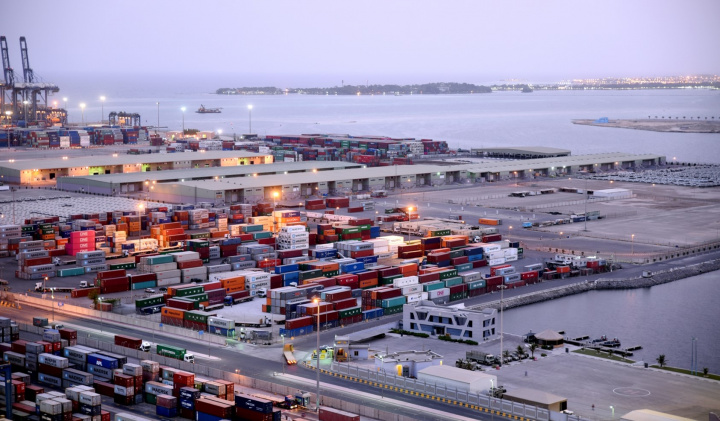Tanker and commercial shipping traffic through the Red Sea show signs of a fragile recovery from recent lows, according to ship tracking data, after the US and its allies continued to hit Houthi military assets in an attempt to stop the militant group from hurting seaborne trade in the strategic waterway.
Vessel transits through the Bab al-Mandab Straits, which connects the Red Sea to the Gulf of Aden, rose to 40 Jan. 22, the highest since Jan. 11 when the US first launched defensive counterattacks on Houthis sites in Yemen, S&P Global’s Maritime Intelligence Risk Suite data shows.
Red Sea ship transits had slumped sharply after the first US-led counterattack, shrinking by up to 60% of early December levels and sending scores of tankers and other shipping around the Cape of Good Hope to avoid the conflict zone. Although up from a historical low of 18 transits Jan. 15, the current traffic through the narrow Bab al-Mandab Straits remains 40% below early December levels before major container shipping lines began avoiding the route.
US and UK forces conducted strikes on eight Houthi targets in Iran-backed Houthi-controlled areas of Yemen, the US Central Command said late Jan. 22.
The last Houthi attack on shipping in the Red Sea was recorded late Jan. 17, when a drone launched from Yemen by Iranian-backed Houthi fighters struck the US-owned and operated bulk carrier Genco Picard. Further drones have been sighted, but nothing has been hit.
Oil in transit
Since then, oil tanker traffic in the Red Sea has edged up.
Crude oil on the water currently transiting the Red Sea stood at 29 million barrels Jan. 21, up from just 12 million barrels Jan. 14 and close to year-ago levels, data from S&P Global Commodities at Sea shows.
Of the total, more than half are made up of Russian cargoes headed to India and China, trade flows that have remained largely unaffected by the Red Sea conflict, the data shows. Tankers in the Red Sea were carrying 10.3 million barrels of Russia’s main Urals crude export grade with another 2 million of Novy Port crude.
Oil product shipments remain more heavily affected than crude cargoes, however, with some 6 million fewer barrels of products in tankers on or in the Red Sea Jan. 21 than a year ago, the data shows.
S&P Global tanker tracking also shows that the number of oil tankers taking the longer Cape route, which can add up to 14 days to a voyage from Singapore to Northern Europe, also peaked at eight in the week ended Jan. 14 before slipping to five in the week ended Jan. 21.
Source: Hellenic Shipping News





